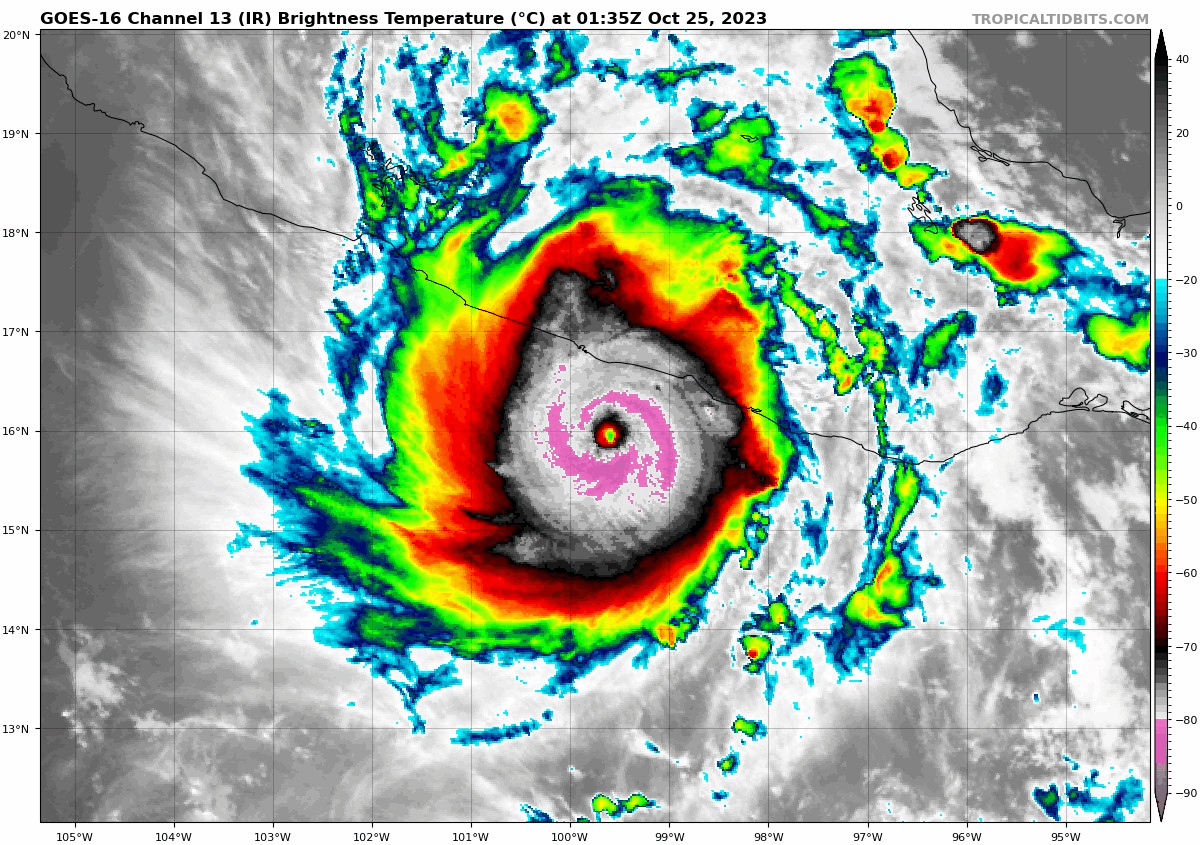2023 Hurricane Season Ends: South Florida Evades the Cone for the First Time in Nearly a Decade
Despite an active hurricane season that included a Category 3 strike in Florida’s Big Bend, storms largely stayed out to sea in 2023

Today marks the official end of the 2023 hurricane season, an active year with over half the season occupied by named storms – the fifth highest coverage in 50 years – but with just one U.S. hurricane landfall and two U.S. landfalling tropical storms.
On average, one to two hurricanes and four named storms strike the U.S. annually.
In total, 20 tropical or subtropical storms formed – the 4th most since 1950 – of which seven became hurricanes and three strengthened into Category 3 or stronger hurricanes.
Hurricane Lee in early September rapidly intensified into a Category 5 hurricane, only the 40th Category 5 hurricane observed in 172 years of recordkeeping and the farthest southeast a Category 5 hurricane has been observed in the Atlantic.
The 2023 Atlantic hurricane season will be remembered for the battle between a budding El Niño in the eastern Pacific – which typically reduces storm activity in the Atlantic – and unprecedented warmth across tropical Atlantic waters.
Ultimately, the historic warmth of the Atlantic in 2023 counteracted El Niño’s usual influence, staving off hostile upper-level winds and churning out more named storms than any other El Niño year in the modern record, according to NOAA forecasters.
Remarkably, despite the flurry of tropical activity in 2023, South Florida evaded the forecast cone for the first time since 2014.
A persistent jet stream dip off the U.S. east coast weakened the high-pressure dome that often steers developing storm systems westward toward the U.S., allowing most of the season’s tracks to recurve east of the U.S. or toward Atlantic Canada.

As a result, Washington County, Maine – the easternmost point in the contiguous U.S. bordering Canada – spent more time in the forecast cone in 2023 than any other county in the U.S.

Nevertheless, the U.S. didn’t escape all that Mother Nature wrought this hurricane season. On August 30th, Category 3 Hurricane Idalia struck sparsely populated Taylor County in Florida’s Big Bend, bringing storm surge flooding up to 7 to 12 feet, according to the National Weather Service. Idalia became the third hurricane to hit the Sunshine State in less than a year and is responsible for at least 5 deaths, including 4 fatalities in Florida, and an estimated $2.5 billion in damage.
The first U.S. landfall of the 2023 Atlantic hurricane season came on August 22nd as Tropical Storm Harold moved ashore Padre Island in South Texas with 50 mph winds, causing minor damage and localized flooding across the southwestern U.S.
Ophelia, which quickly came together off the southeastern U.S., was the third and final named storm to strike the U.S. on September 23rd. The 70-mph tropical storm washed ashore near Morehead City, North Carolina, bringing wind gusts to hurricane strength and widespread flooding at the coast and inland.
The most impactful hurricane of 2023 wasn’t in the Atlantic but in the eastern Pacific. Hurricane Otis rapidly strengthened 110 mph in the 24 hours before landfall off the coast of southern Mexico, striking Acapulco as a Category 5 hurricane on October 25th.

Otis’s rate of strengthening was poorly forecast by hurricane models and the National Hurricane Center characterized it as a “nightmare scenario.” Otis’s catastrophic intensity at landfall was unprecedented for the stretch of coastline near Acapulco. While the full scope of the hurricane’s aftermath is still being assessed, scores of people lost their lives according to local authorities.
The Atlantic hurricane season recommences on June 1, 2024, with the first seasonal hurricane forecasts slated for release in early April 2024.









Dodged.
<shudders> I do NOT, NOT, miss the snow and ice and blasting frigid winds. Now it did get cold (for down here at least) the last two days and fell into the low 50s at night. When you have been used to mid 90s to upper 80s for months (and with high humidity from late May until October) that is frigid. It got up to 70 today and will be in the 80s tomorrow so very comfortable as the humidity on this side of the state isn't bad except in the summer. The next several months will be wonderful weatherwise, warm most of the time, generally 70s to low 80s with low humidity during the day and usually 50s at night for good sleeping weather. No need for AC during these months. Does occasionally get down as far as 38 at night but goes back up once the sun is up. Snowbirds are back and some of them were freaking out about a baby alligator that was seen crossing a yard during the day. Don't know why some people come down here when the wildlife scares them so badly. Alligators may look scary but aren't dangerous unless you get stupid. Now I worry more about the Nile monitor lizards and Burmese pythons that have gotten into the south part of the county. They will be a problem here soon. We also have a coyote running around the neighborhood.